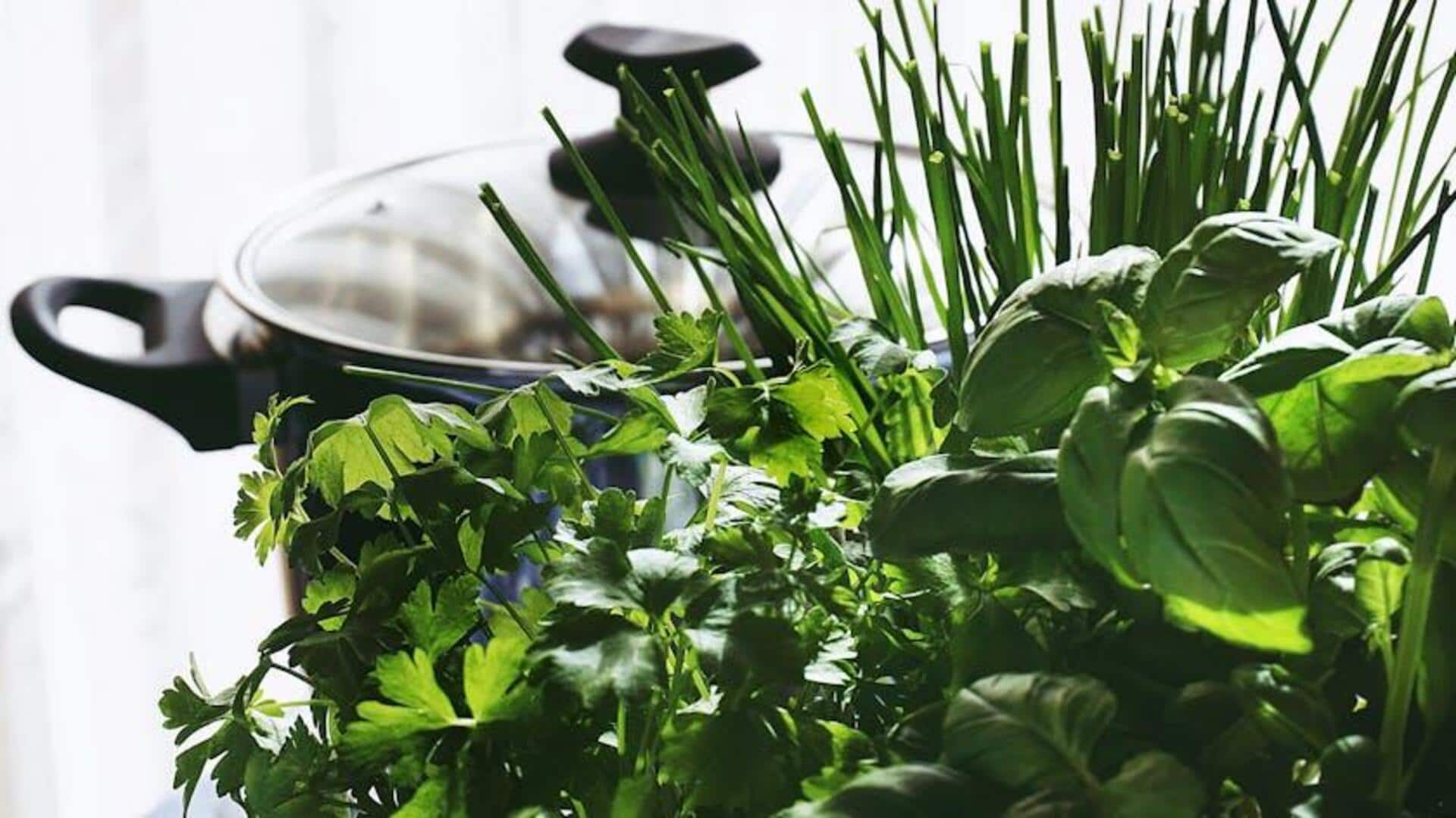
How to grow herbs in just water
What's the story
Regrowing kitchen herbs with water propagation is an easy and economical way to keep your herb stock fresh. Using this technique, you can grow herbs without soil, making it a perfect option for those with restricted space or resources. Just place herb cuttings in water, watch them root, and transplant them into pots/gardens. This way, you not only save money but also have fresh herbs for your culinary needs.
Herb selection
Choosing the right herbs
Not all herbs can be propagated in water. The best candidates would be basil, mint, oregano, rosemary, and thyme. These herbs have stems that root well in water. When you're picking cuttings, make sure the stems are healthy and free from disease or damage. The cutting should be at least four to six inches long with a few leaves attached.
Cutting preparation
Preparing the cuttings
To prepare your herb cuttings for propagation, remove the lower leaves from each stem to prevent it from rotting in the water. Leave a few leaves on the top of each cutting to aid photosynthesis. Use clean scissors/pruning shears to make a diagonal cut at the base of each stem; this increases surface area for better water absorption.
Container setup
Setting up water containers
Choose clear glass jars or bottles as containers so that you can keep an eye on root growth. Fill these containers with enough room-temperature water to submerge the bottom two inches of each cutting, without covering any leaves. Place containers on a windowsill where they receive indirect sunlight; direct sunlight may cause overheating and damage delicate roots.
Growth monitoring
Monitoring growth progress
Check your herb cuttings every few days and change the water weekly to avoid stagnation and bacteria growth. Look for signs of root development within one to two weeks; once roots get about two inches long, consider transplanting them into soil-filled pots, if you want. Watch out for any signs of wilting or discoloration, which may indicate issues with light exposure or nutrient deficiency in new plants.